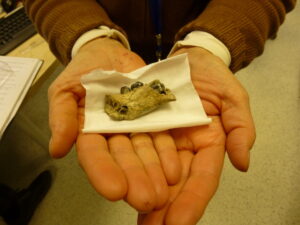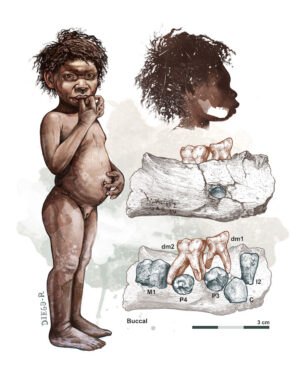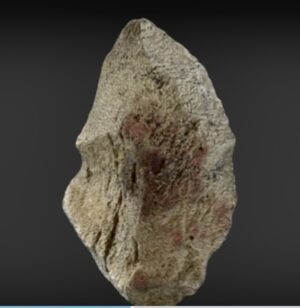
AMERICAN ASSOCIATION FOR THE ADVANCEMENT OF SCIENCE (AAAS)—Two million years ago, Homo erectus had expanded beyond the lowland savanna environments of East Africa and into the high-altitude regions of the Ethiopian highlands, where they produced both Oldowan and Acheulean tools, according to a new study. It presents a reanalysis of an early hominin fossil first discovered in 1981. The findings provide novel insights into the evolution, migration and adaptive capacities of early human ancestors. In Africa, the limited number of hominin fossils found in direct association with stone tools has hindered attempts to link Homo habilis and Homo erectus with particular stone tool industries, namely Oldowan or Acheulean. One region critical to studying this question is a collection of sites known as the Melka Kunture complex – a cluster of prehistoric sites on the highlands of Ethiopia at an altitude of ~2000 meters above sea level. In 1981, a fossilized infant mandible was discovered at the Garba IV site and in direct association with Oldowan lithic tools. However, the hominin species the fossil represents has been the subject of debate. In this study, Margherita Mussi and colleagues evaluate the geochronological context of the Garba IV site and re-assess the taxonomic affinity of the fossil mandible. Using synchrotron imaging to examine the internal morphology of the unerupted teeth in the Garba IV mandible, Mussi et al. confirm that it belonged to H. erectus. Moreover, combining preliminary argon-argon dates for the site’s stratigraphy with a more recently published magnetostratigraphic analysis, the authors argue that the fossil is around 2 million years old, making it one of the earliest H. erectus specimens yet discovered and the only one in clear association with an abundant Oldowan lithic industry. The overlying Acheulean tool-bearing strata, which date to ~1.95 million years ago, represent the earliest known evidence of Acheulean lithic technology. According to Mussi et al., the findings demonstrate that by 2 million years ago, H. erectus adapted early and quickly to a high-altitude mountain environment, first producing Oldowan technology and then Acheulean technology.
____________________________

Garba IV level E mandible of a Homo erectus child. Italo-Spanish Archaeological Mission at Melka Kunture, with ARCCH permit
____________________________

Garba IV level E_child and fossil remains. Diego Rodriguez Robredo
____________________________

Handaxe 4516 from Garba IV level D, the earliest Acheulean so far discovered, dated 1,950,000 years ago. Italo-Spanish Archaeological Mission at Melka Kunture, by ARCCH permit
____________________________
Article Source: AMERICAN ASSOCIATION FOR THE ADVANCEMENT OF SCIENCE (AAAS) news release.
*Early Homo erectus lived at high altitudes and produced both Oldowan and Acheulean tools, Science, 12-Oct-2023. www.science.org/doi/10.1126/science.add9115
____________________________
Advertisement

See the incredible archaeology, architecture, and art of northern Spain. A unique tour with special expert guides and lecturers through the collaboration of Popular Archaeology Magazine and Stone & Compass Tours. Not to be missed. Read More About It: https://popular-archaeology.com/article/northern-spains-triple-a-archaeology-architecture-and-art/.
____________________________





